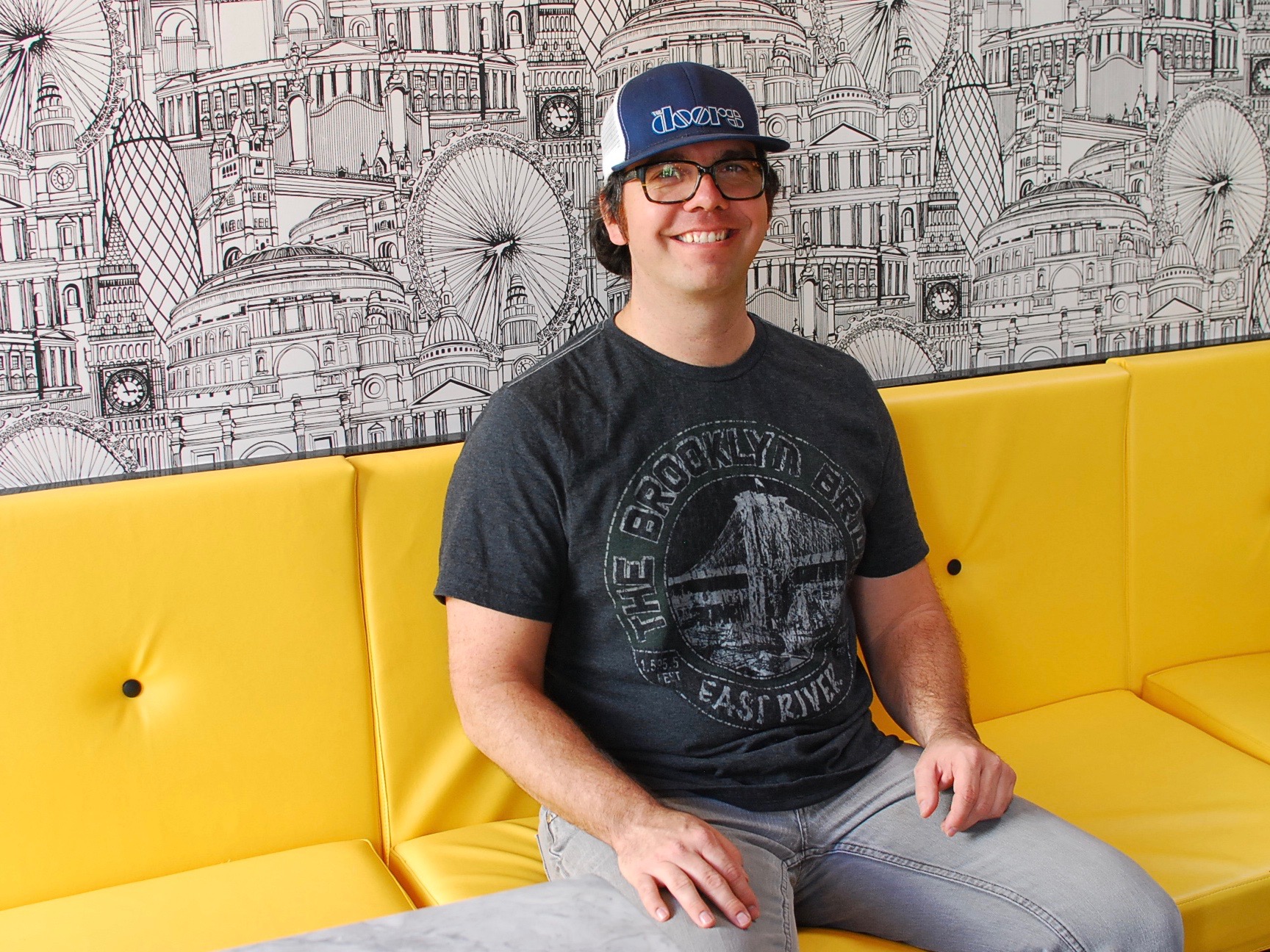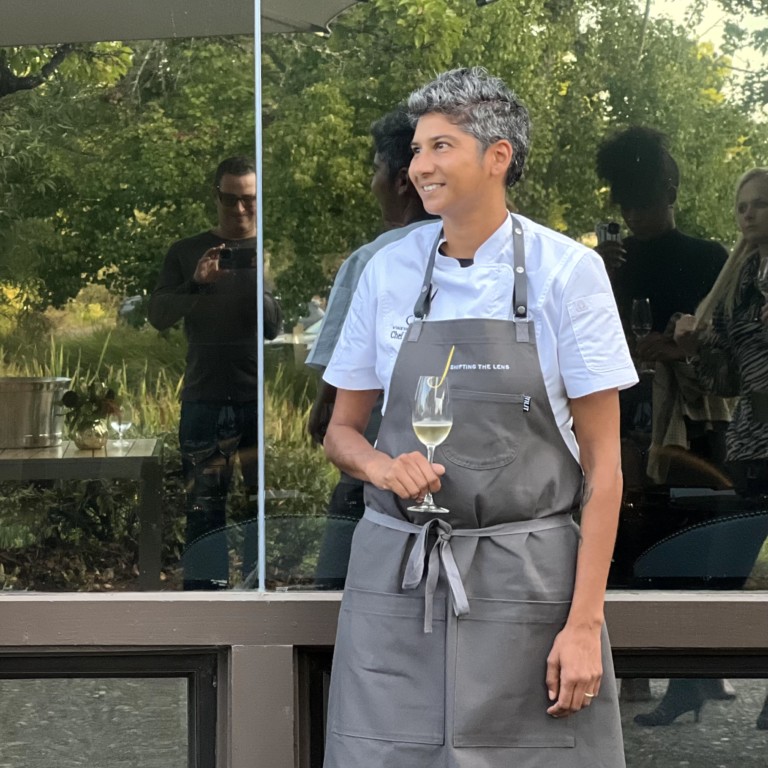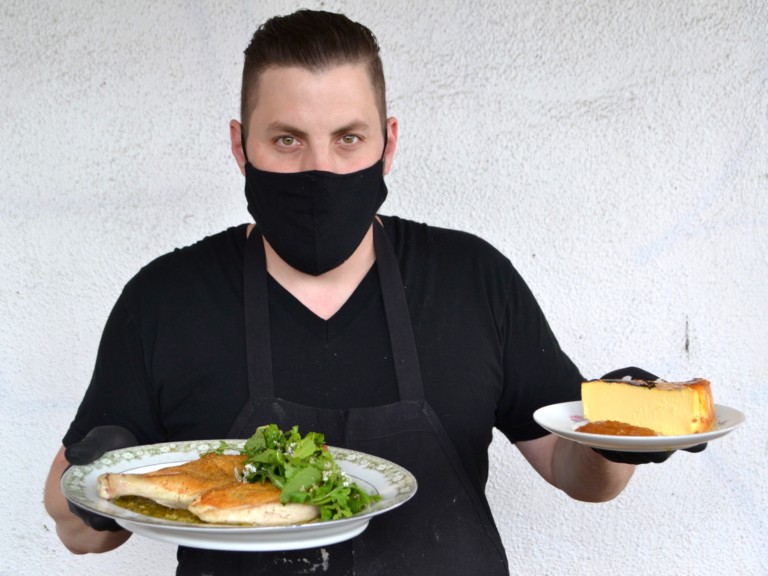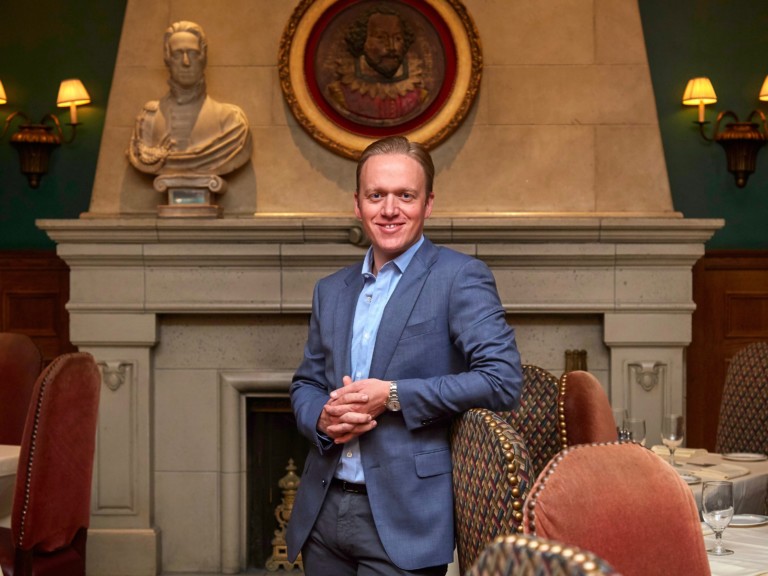In Orange County, Jeff Duggan has become synonymous with specialty coffee. The trained chemist started roasting beans at home in 2000, experimented with commercial roasting at Irvine’s Layer Cake Bakery and launched Portola Coffee Lab in full at OC Mart Mix with wife Christa in 2011. Portola quickly became one of the most progressive coffee bars in Southern California, and it wasn’t long before they expanded next door with THEOREM, a six-seat bar with more personalized service. However, while Duggan preaches coffee gospel, he also supports beverage diversity and decided to open Seventh Tea Bar down the hall, featuring the same attention to detail and a nod to Chinese necessity, as tea is the seventh daily Chinese esssential, the first six being firewood, rice, oil, salt, sauce, and vinegar. On January 20, we met at Seventh Tea Bar, and Duggan shared insights that required no reading of tea leaves.
Do you think tea will ever capture the imagination of people the way that coffee does?
Honestly, I think yes. I don’t often bring Starbucks into my conversation as a reference point – and of course we made our decision to do this even before Starbucks bought out Teavana and before they opened their first dedicated Starbucks-branded teahouse – I just had a gut feeling that tea was going to be one of the last beverages elevated into the craft circle of beverages. I felt like it was imminent, definitely going to happen in the future, but when, who can say? Then when Starbucks made those moves, buying Teavana and advertising they would be opening these dedicated teahouses, I knew that it was a good move. One thing I can’t deny about Starbucks, in terms of their marketing and research, they have a lot of resources, and they do it well. Probably one of the best in the coffee industry, knowing when trends are going to happen, what they’re going to be. In terms of quality, that’s a different conversation, but in terms of reading the American consumer, I think they’ve done a fantastic job of that. And the fact that they’re doing it now tells me that probably in three or four years, we could see people excited about tea in America like they were excited about coffee in the early ’90s when it just started blowing up and Starbucks went everywhere. I feel good. It kind of makes me happy that they’re doing what they’re doing. It just reinforces my gut feeling. In my mind, the risk is a little less now, but we’ll see.
Tea is the second most consumed beverage in the world after water. Why do you think there have been barriers to entry in the U.S.?
Tea has such a rich history. 2337 B.C. is when, on the books, tea came about. Coffee came along far later. Tea was around far earlier in Asian countries and eventually migrated to Europe and through colonization, got transplanted to different parts of the world, including America. Then we had the Boston Tea Party where people revolted and dumped a bunch of tea in the water. That was the precursor to our revolution and America becoming America, and not just a colony. I don’t know if tea was a reminder of the worst days of colonization and moved toward coffee. That’s a good question.
I’ve heard at specialty coffeehouses, tea typically accounts for 10% or less of sales.
That’s correct. It is less than 10%, but then you look at places that do have dedicated teahouses and they do well and have been around for a long time. If you go up to San Francisco and Chinatown and see those teahouses, or to metropolitan teahouses, they’ve been around for a long time. Using a coffeehouse as a litmus test for where tea is, is just bad, because people who really love tea don’t want to go somewhere where it’s just another product. “Oh, we’re serving tea because some customers asked for it, to get some extra sales, but we’re not going to put any effort into it.” And that’s kind of how I felt our approach was, even though I did pay close attention to the tea I sourced there [Portola Coffee Lab], and felt like there was quality, I still felt like we weren’t giving it the proper attention. That didn’t sit well with me, because anything I do in my shop over there, it has to be great. I have to feel comfortable that I’m giving it the best attention and treatment that I can. That played into my decision to open this. The belief that tea in America is going to happen, in terms of the demand for quality tea, coupled with the fact that I felt like we weren’t giving it the attention that we could. It just made sense. What’s great is that we’re literally a few footsteps away. I feel like I can create more of a pure business model, where we have coffee here and tea here, and if somebody wanted one or the other, just go right over there. You don’t have to get in your car and drive. This was the perfect venue to really separate yourselves, but then we’re not really turning away any customers.
How do you decide what teas to serve here, and in what format?
We’re kind of approaching tea the same way we approach coffee. You’ll notice when you look at our menu that we don’t have 100 teas. We don’t have 120 teas, because we’re focusing on single estate or unblended teas. We’re again trying to source the best quality teas so that what we taste is natural in the leaf, and not something artificial that’s added to the tea to create flavors that have nothing to do with the tea at all. We have a much more pared down menu, but what we’re trying to do is introduce people to real tea flavor. Kind of like what we do with coffee. You’re not going to get a lot of additions, like syrups and artificial sweeteners of any type. That was important to me because I feel like there are a lot of teahouses in America, but a teahouse that’s running like a Third Wave coffee shop, I haven’t seen it. There could be, but I haven’t experienced it, especially here locally. How we’re going to separate ourselves is just going back to the basics. Focus on raw ingredients, make sure we don’t screw it up along the way, to the point from where it’s purchased, to the point we serve it in the cup. And screwing it up, in my opinion, can be done in many ways. Not nearly as many as what we have to deal with on the coffee side, because we’re manufacturing roasted coffee over there, where here, we’re buying a finished product. We can screw it up in how we purchase, of course, if we don’t buy good leaves to start with, or if we don’t store it properly, but most likely, brewing is most likely where we’re going to mess it up. That’s kind of the difference.
Also, you’ll notice, in terms of our brewing methods, they’re going to evolve. We haven’t thrown tradition out the window in terms of brewing, but we’re also throwing it out the window, in a sense. We respect it. We still brew with traditional methods, but we’re not locking ourselves into, “This is how you brew tea,” because I feel like, if there’s one thing that could push the tea industry, and elevate it, is to focus more on brewing science. The coffee industry has evolved tremendously in the last five years by increasing focus on brewing techniques and brewing devices in the last five years, versus probably the last 100 years. Tea is at that point where specialty coffee was, before we had any real clue on how important brewing was. We’re looking at taking some of the brew devices that have gained popularity, with good reason, in coffee, and bringing them over to the tea side to experiment and see if we can push the envelope in terms of how we brew tea. I truly believe that technology can improve the quality of tea. It certainly has in coffee. And if you’re talking about water, and a solid and a solvent, water as the solvent, in terms of extraction, it’s very similar. Hot water extracts more than cold water. Steeping longer extracts more than steeping less. There are a lot of similarities in how tea is brewed, compared to coffee. We’re going to contribute a lot to the industry with our ability to push the envelope, and maybe we take a particular device, test it and realize this doesn’t work. Scrap it and move on.
The Trifecta has been a perfect example of that. We’re not only bringing controlled agitation, controlled temperature and steeping time, but with the Aeropress, there’s a pressure applied at the end of the brew that forces it to float, which is really unique. Trifecta tea produces a drastically different tea than a tea that’s just brewed by the full immersion method, that traditional teas are brewed with. So I’m excited about that, and by what we can do.
You’re using that already?
Yeah.
And then you have the Uber-boilers? Three of them?
Yes. And again, just to control the temperature of the water. Those look like Café Solos, made be Eva Solo, but their tea version of it, and those are amazing, better than any full immersion method or tea device I’ve ever used, simply because, with that vase type shape, when you add the tea to the water, you can get a very good swirling motion, and the tea leaves are very loose in the solution. Even with the modern tea devices, it gets compacted in a metal filter where they don’t really get to open up and move. We’ve found with those devices, we’ve already improved tea brewing. And we’re getting a new device which we honestly can’t talk about right now because we’re going to be one of their launch partners of this particular device. That’s going to be on our counter in March and that, we’re super excited about.
If you could only drink one more cup of tea, what would it be and why?
Great question and without hesitation it would be the Da Hong Pao (Big Red Robe) from one of the original bushes that date back as far as 10th century China. This original tea consists of only three bushes that were preserved by the emperor after tea from these bushes allegedly cured his ill mother. These three bushes still exist and produce tea, although the price of leaves for just one cup can run as high as $100,000. I don’t know what it tastes like so this is based purely on just being able to say I tasted it. 🙂









Leave a Comment